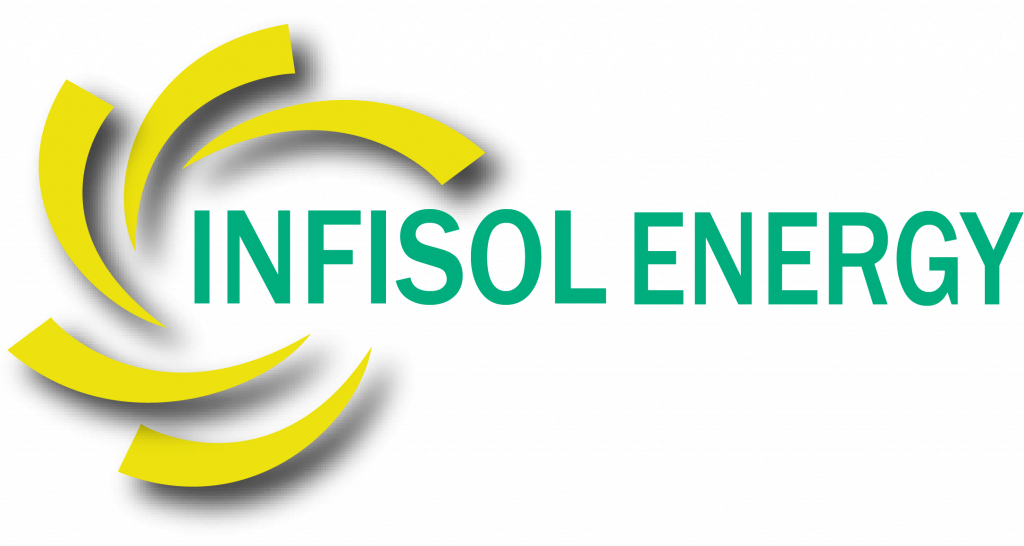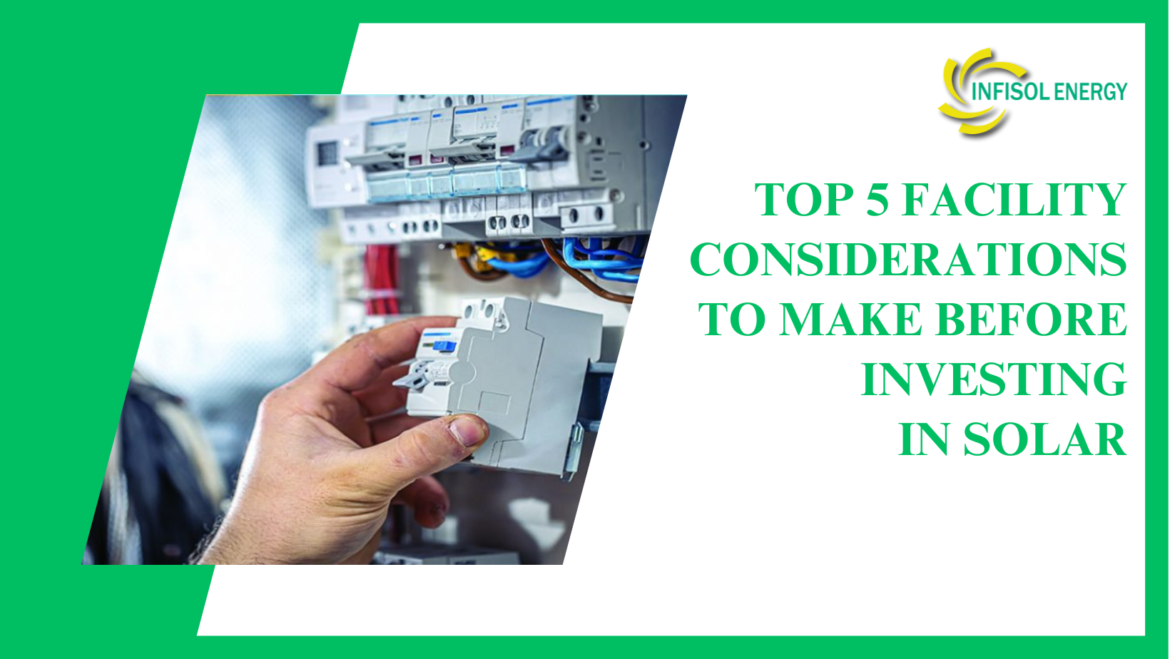[vc_row][vc_column][vc_column_text]The financial and sustainability benefits of solar have made it a popular investment among businesses of all types and sizes. If your company is starting to investigate the possibility of rooftop solar, there are some important facility-related considerations your solar developer will help you evaluate right away:
[/vc_column_text][/vc_column][/vc_row][vc_row][vc_column][vc_column_text]1. Roof Condition
For roof mounted solar arrays, the condition of the roof is one of the most important factors in when to go solar. Not all systems are the same, but the PV systems that Infisol Energy provides are designed to be 30-year systems. The ROI for a system can be greatly affected if the facility’s roof would need to be replaced at an early stage of that lifespan.
If your facility’s roof is in poor condition, there are some actions that can be taken to account for this. One option would be replacing the roofing altogether, which works well with a brand-new solar system. It is a great opportunity to freshen up the roof system and confirm warranty continuation. Another option could be replacing only the section of roofing just beneath the solar array, which would reduce the initial investment.[/vc_column_text][/vc_column][/vc_row][vc_row][vc_column][vc_column_text]2. Facility Structure
Roof mounted solar arrays add various loads to the roof structure. The structure of your facility must be able to support this additional load. Loads are calculated using engineered documentation from racking manufacturers as well as local and state code requirements. Infisol energy utilizes licensed structural engineers to confirm the load-bearing capacity of the structure and, if necessary and feasible, make recommendations for structural improvements to allow the installation of solar arrays. There are almost always ways to improve the structure. It is just a matter of how economical those methods are and the priorities of the client.[/vc_column_text][/vc_column][/vc_row][vc_row][vc_column][vc_column_text]3. Electrical Infrastructure
PV solar systems produce power that must be connected to the building’s electrical infrastructure. Often, the electrical infrastructure of a facility is too small to support the proposed system, too old to connect to, or simply too difficult to connect to without making major changes. If your facility’s electrical equipment is old and in need of replacement, that is the best time to consider making accommodations for solar to connect to it. Solar can be incorporated into the new equipment for a significant cost savings.[/vc_column_text][/vc_column][/vc_row][vc_row][vc_column][vc_column_text]4. Load Profile
Depending on local utility policies, the PV solar system at your facility will likely be sized to minimize the amount of solar energy that is exported to the utility grid. This is done by matching the solar output profile (by minute, day, and month) to the facility’s load profile (when and how much power you are using). If your facility uses most of its power in the middle of the day, then your facility is likely a great match for solar since production is greatest at that time. However, if you produce all of your power first thing in the morning or late in the evening, then the PV solar system size may need to be reduced because it would not be offsetting energy directly.
This is all very dependent on utility police and rate schedules. Some policies are very favorable to solar and virtually eliminate the need to consider the facility’s load profile. Other policies require us to use it as our main limiting factor in system size.
Some facilities are also able to manipulate their load profiles to maximize the benefit of solar. For example, in a manufacturing plant with various processes going on, the high energy use processes may be able to be moved to the middle of the day, when the cost of energy may be highest and the output of solar is the highest. Infisol energy has worked with many clients who have implemented similar policies in order to reap the greatest benefits from their solar installation.[/vc_column_text][/vc_column][/vc_row][vc_row][vc_column][vc_column_text]5. Future Facility Plans
Solar power is a significant asset that is typically sized and designed specifically for your facility’s characteristics. If you are considering making significant changes to your facility in the future, those alternations should be considered when sizing and installing a solar system. For example, if you are planning to expand the footprint of your facility, the solar system should accommodate that expansion in terms of infrastructure design and capacity, location of equipment, etc. Another example might be a change in facility loads. You may have plans to implement more automation, shift the timing of loads, or change the function of a facility altogether. These are all important factors when sizing solar arrays. Be sure to mention this to your developer when considering solar.
Facilities vary greatly, but a reputable solar developer can easily help you evaluate your facility and develop a comprehensive plan to safely and cost-effectively implement solar. If facility upgrades are recommended, expect your solar developer to incorporate those costs into the ROI calculation for the solar PV project.
[/vc_column_text][/vc_column][/vc_row][vc_row][vc_column][vc_column_text]At Infisol energy, we provide high-quality, reliable solar PV systems that make financial sense for the long-term. We work closely with every customer to provide support from initial interest throughout the life of the system. If you’re ready to learn more or have questions about your facility, please reach out to us.
[/vc_column_text][/vc_column][/vc_row]

